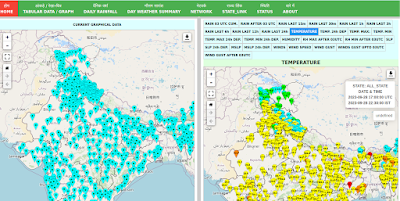'But it appears worthwhile to answer here one frequently posed question: "Does the Monte Carlo method help to win in roulette?" The answer is "no". It is not even concerned with it.'
- Ilya Meyerovich Sobol, 'The Monte Carlo Method'
Just as clarified by the mathematician Ilya Sobol in the line above, it is not the purpose of this article to encourage the reader to become a student of the methods of master gambler Shakuni of the Indian epic Mahabharata. However, a total ignorance of the subject of probability and the rules governing the behaviour of random phenomena can surely land the practicing urban planner in a situation similar to the hapless Yudhishthira in the game of dice. For sure, our planner would not lose a kingdom and head for a 13 year exile, but the feeling of powerlessness, overwhelming sense of failure and incompetence may last way longer.
 |
| Shakuni facing Yudhishthira in the game of dice in Peter Brook's Mahabharata |
The urban situation is not just complex, uncertain and random, but like the loaded dice of Shakuni, it can also be brutally unfair. The chances of a professional planner to be able to tackle the urban system without the appropriate toolkit are low indeed.
One could say, that the probability of a planner successfully tackling urban uncertainty without the knowledge of probability is rather low.
The uncertainty of urban systems arises from the fact that many urban phenomena are non-deterministic in nature. Urban systems are dynamic where many variables continuously interact with each other. In cybernetics, variety is defined as the number of states any given system can take, and it can be quantified. Large and complex systems can have very high amount of variety - i.e. the total number of states that their sub-systems can take and their combinations - and hence they can also be highly uncertain and non-deterministic.
Consider the following questions from David Foot's wonderful book on operational urban models, which could be explored using urban models -
- How would a large area of new residential development or inner city redevelopment affect the journey to work trip pattern and general accessibility of a region ?
- How would a large increase in employment resulting from the development of a new airport affect the surrounding region and what other housing and transport policies would be needed ?
- How would the development of a new hypermarket affect the shopping pattern of the region, particularly nearby shopping centres of smaller size ?
- How would a general change in accessibility due to a large increase in petrol prices affect the region ?
The answers to none of the above questions can be given in a static, deterministic way. There is a whole range of ways in which different actors in the city could react to any of the situations listed above. There is no easy way to anticipate or prepare for the consequences of such developments. But that does not mean it is impossible.
Urban systems are not deterministic. They are probabilistic.
Probability and the First Law of Geography
Understanding the role of probability in urban studies is intrinsically linked with the concepts of gravity, distance decay and spatial interaction. To estimate the probability of an event is basically the task of figuring out what is most likely to happen (or not happen). According to the classical definition of probability this is calculated according to the following formula -
P(A) = m(A)/n
Where P(A) is the probability that event A happens; m(A) is the number of chances favourable to event A; and n is the total number of chances.
When we toss a coin we do not know in advance whether we will get heads or a tails , but we know simply from common sense, that the chance of getting either is 50-50. There are a total of two chances i.e. we can get heads or tails (so n=2) and we can get either heads or tails (so m(A)=1). And therefore,
P(A) = 1/2 = 0.5 = 50 %......as in, fity-fity
In urban systems this concept of likelihood gets linked to geographer Waldo Tobler's first law of geography , which states:
"Everything is related to everything else, but near things are more related than distance things."
This first law of geography is fundamental to understanding spatial interactions in urban systems. Given two equally nice cafes, which is the one we are most likely to visit ? In most cases, it would be the nearer one. While we may visit both depending on our wish, if we maintain a continuously updated data-file of our own movements, we would would discover that as the data piles up there is a marked tendency to visit the nearer cafe more frequently than the farther cafe.
In urban modelling this is known as distance decay. Our likelihood of going somewhere is inversely related to the distance that exists between us and the location of that place. The distance can be physical distance in terms of kilometres (or miles), or in terms of money or time we have to spend or any other form of cost that we may have to incur to reach that place. I had illustrated this relationship as a graph in an earlier blog -
The graph basically shows at what rate the likelihood to go a certain distance would decrease depending on the way in which the influence of distance is measured in the equation. The green line shows the effect of simply being inversely related to the distance (1/D).The blue line shows what happens if distance is not only inversely related but also raised to the power 2 (1/D^2). Finally, the red line shows the most most extreme case, where the effect of distance is raised to the power of 3.
The second case corresponds to the law and the corresponding equation by Reilly, which stated that -
"A city will attract retail trade from a town in its surrounding territory, in direct proportion to the population size and in inverse proportion to the square of the distance from the city."
The fun of spatial interaction begins when we consider that it is actually a tug of war between the attractiveness of the place we wish to reach and the distance that separates that place form us. In Reilly's equation the population of the larger city acts as a proxy for its attractiveness. The fact that it is inversely related to square of distance was empirically derived based on his study of cities in the USA.
In other situations the power function may, of course vary, and whether it would be distance raised to the power 2 or any other number is determined during calibration of the model. In terms of attraction one could select any other relevant variable instead of population. In retail models, a variable that is used to represent the attraction of a place as a commercial area is often the total area of retail floorspace. Similarly, an area's attraction as a residential area could be measured using a variable such as total residential floorspace available. The following equation shows the relationship between the flow of people from a residential zone i to a commercial facility in zone j -
Tij = Fj/dijy
[ Where: Tij is the flow of people from i to j ; Fj is the attraction of zone j (e.g. total square metres of retail commercial space or number of shops in the zone ; and dijy is the distance between zones i and j raised to an appropriate power of y]
Let's assume that there are a total of 3 zones in our study area. Then, using the probability of a person of zone 1 to go shopping in zone 2 would be given by the ratio of the chance that the person goes to shop in zone 2 and the total number of chances (i.e. all the ways in which the person may go shopping in any of the three zones)
Using the formula of probability and the formula of spatial interaction given above :
m(A) = probability that a person in zone 1 goes to shop in zone 2 = F2/d12y
n = total number of ways in which a person from zone 1 can go shopping in any of the three zones = F1/d11y + F2/d12y + F3/d13y
Putting it all together, the probability that a person in zone 1 goes shopping in zone 2 would be given by -
Pr12 = (F2/d12y) / (F1/d11y + F2/d12y + F3/d13y)
So much for today. In the next blog, we will look deeper into the above formula and calculate the value of the probability by punching in some numbers.
To be continued...







